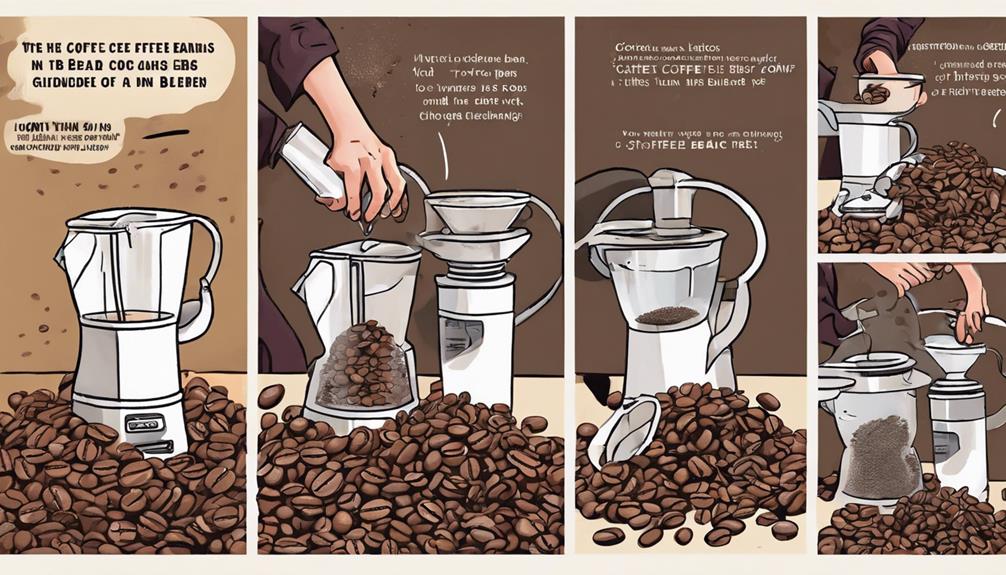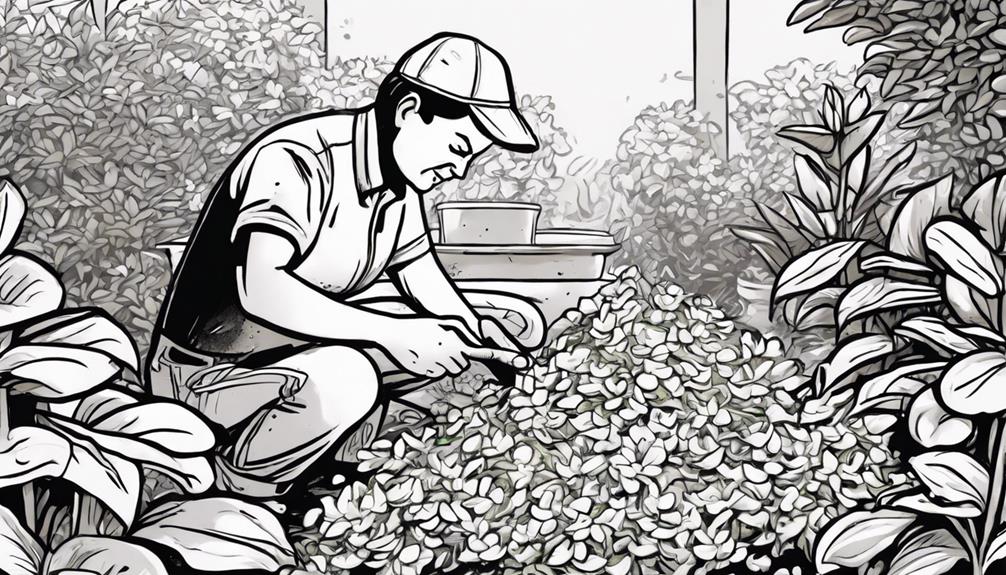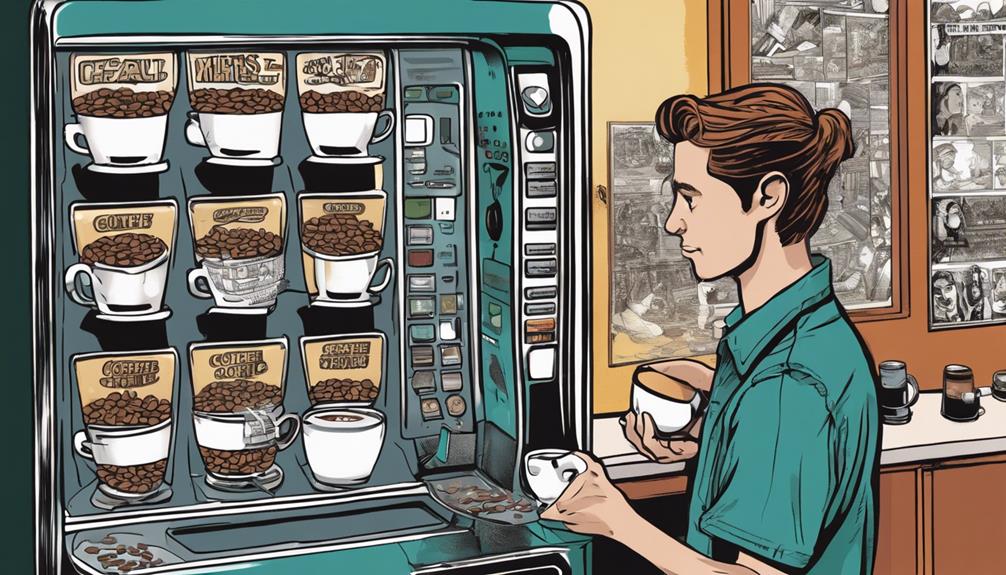To mix coffee beans in a blender, start by adding your beans. Utilize brief pulses to grind consistently. Adjust settings for your preferred grind. Confirm the ideal consistency for your brewing method. The blender can achieve a smooth, even texture. Mastering this can enhance the flavor of your coffee. Blending coffee beans at home allows you to customize the flavor and strength of your coffee to suit your taste. Experiment with different bean combinations and roasts to create a unique blend that you love. With practice, you can become skilled at achieving the perfect grind for your morning brew.
Key Takeaways
- Use short bursts for consistent grind.
- Adjust settings for desired consistency.
- Experiment with settings for best results.
- Familiarize with blender functions beforehand.
- Achieve ideal grind for specific brewing methods.
Blender Basics
To achieve the ideal coffee grind consistency, start by familiarizing yourself with the basic functions of your blender. Using a blender to grind coffee beans without overheating them is a simple process that yields great results. Begin by adding the desired amount of coffee beans to the blender pitcher. Pulse the blender in short bursts to guarantee a consistent grind, shaking the blender or container between pulses to achieve an even texture.
Blenders are versatile tools that can be adjusted for different brewing methods and personal preferences. Whether you prefer a fine grind for espresso or a coarser one for French press, blenders can be used to blend coffee beans to the desired consistency.
Experiment with the settings on your blender to find the perfect grind for your favorite brewing method. With a little practice, you'll be able to reliably achieve the perfect coffee grind using your blender.
Food Processor Grinding
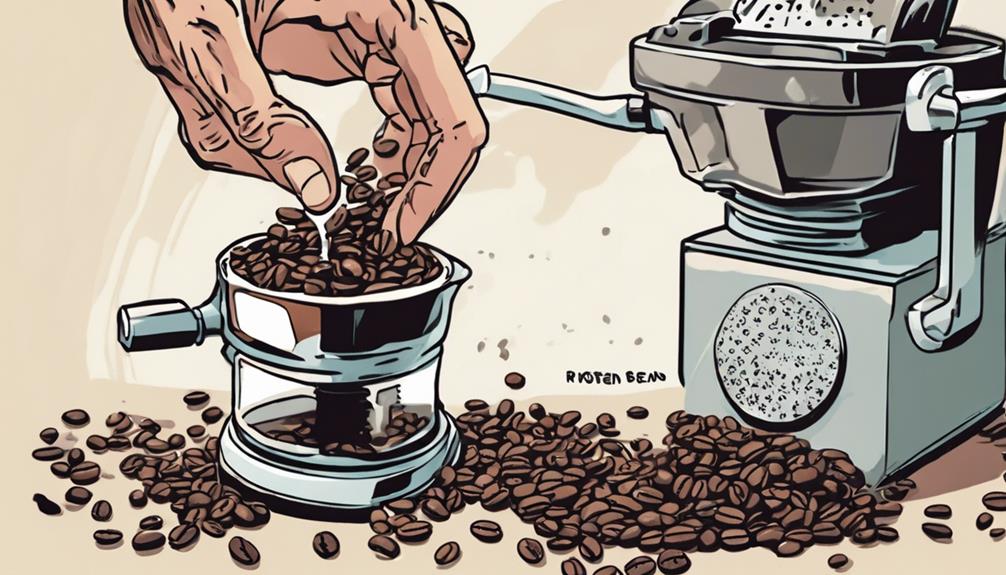
For a different approach to grinding coffee beans, consider using a food processor for a broader grinding width that allows you to process larger batches efficiently.
When using a food processor to grind coffee beans, make certain to add enough beans to capitalize on its wide width. Utilize the pulse setting on the food processor to achieve a uniform grind. To guarantee an even grind throughout the beans, tilt the food processor as necessary during the grinding process.
Grinding coffee in a food processor may take up to 30 seconds to achieve the desired consistency, so be patient. Remember to store any excess ground coffee in an airtight container to preserve its freshness for future use.
Rolling Pin Method

Consider using the rolling pin method as a manual way to achieve a coarse grind for French press coffee. To start, place your coffee beans in a Ziploc bag to avoid any mess.
Then, utilizing the rolling pin technique, crush the beans by applying even pressure. This method allows you to control the coarseness of the grind by repeating the rolling process until you reach the desired consistency for brewing. Remember to shake the bag periodically to ensure uniform grinding and consistent coffee grounds.
The advantage of this approach is the ability to adjust the grind size to suit your brewing method. By crushing the beans in a Ziploc bag using a rolling pin, you can enjoy a coarse grind perfect for French press coffee without the need for any specialized equipment. Give this method a try for a hands-on coffee grinding experience.
Mortar and Pestle Grind
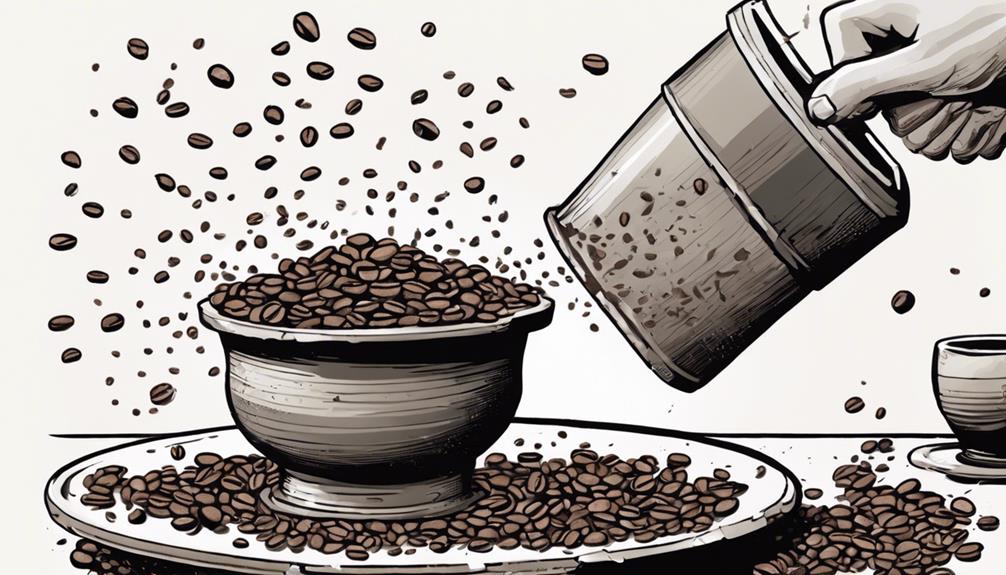
Using a mortar and pestle is a laborious but effective method for achieving finer coffee grounds. When grinding the beans with a mortar and pestle, you need to move the pestle in a circular motion, pounding the beans to break them down into the desired coffee consistency. This manual approach allows you to adjust the pressure according to your grind setting preference. The mortar and pestle technique is perfect for creating fine coffee grounds suitable for drip coffee. Check out the table below for a summary of the key points when using a mortar and pestle:
| Key Points | Mortar and Pestle Grind |
|---|---|
| Method | Manual approach |
| Motion | Circular grinding |
| Consistency | Fine coffee grounds |
| Adjustability | Pressure and grind setting |
| Ideal for | Drip coffee |
Hammer Grinding
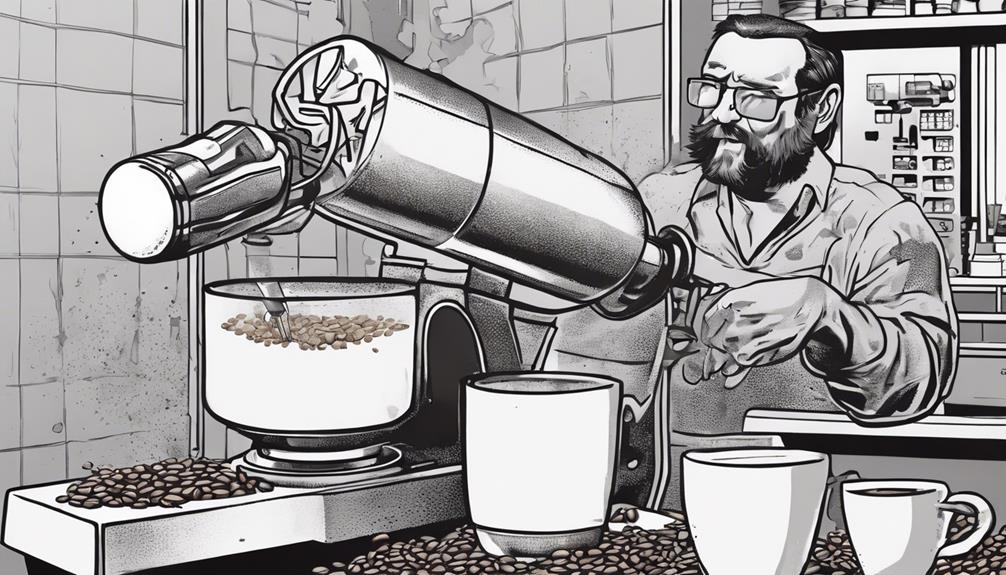
When grinding coffee beans using the hammer method, a sturdy surface and a hammer are essential tools for achieving a coarse grind. Hammer grinding, a manual method, involves placing the coffee beans in a bag and crushing them with a hammer until they reach the desired consistency.
This technique is particularly useful for specific brewing methods like the French press, which requires a coarse grind for best extraction. Similar to using a rolling pin but requiring more force, hammer grinding is an alternative when other grinding tools aren't available.
While it may not be the most traditional method, it can still produce satisfactory results in a pinch. By firmly crushing the beans, you can control the coarseness of the grind to suit your brewing needs.
Frequently Asked Questions
How Do You Blend Coffee Beans in a Blender?
To blend coffee beans in a blender, pulse them in short bursts for 20-30 seconds. Remember to shake the blender or pause between pulses for an even grind. Experiment with pulse durations for your desired consistency.
Is It Better to Grind Coffee Beans in a Blender or Food Processor?
Is it better to grind coffee beans in a blender or food processor? Well, for a quick, consistent grind with smaller batches, a blender is superior. Its blade design breaks down beans effectively, providing a smoother, more even grind.
What Is the Best Way to Grind Coffee Beans?
For the best way to grind coffee beans, consider using a burr grinder for uniform texture. If opting for a blender, pulse in short bursts and sieve out larger particles. This method can be efficient for specific brewing techniques.
Can You Put Coffee Beans in a Smoothie Blender?
Sure, you can put coffee beans in a smoothie blender. Use short pulses to grind them consistently. Shake the blender between bursts for even grinding. Don't overfill. Check the texture for your desired coarseness. Enjoy your freshly ground coffee!
Conclusion
Now that you've learned how to blend coffee beans in a blender, you're ready to take your morning brew to the next level!
Just like a skilled chef in the kitchen, you can now grind your beans with precision and finesse.
So grab your blender and get ready to grind away, creating the perfect blend of flavors for your morning cup of joe.
Happy blending!
